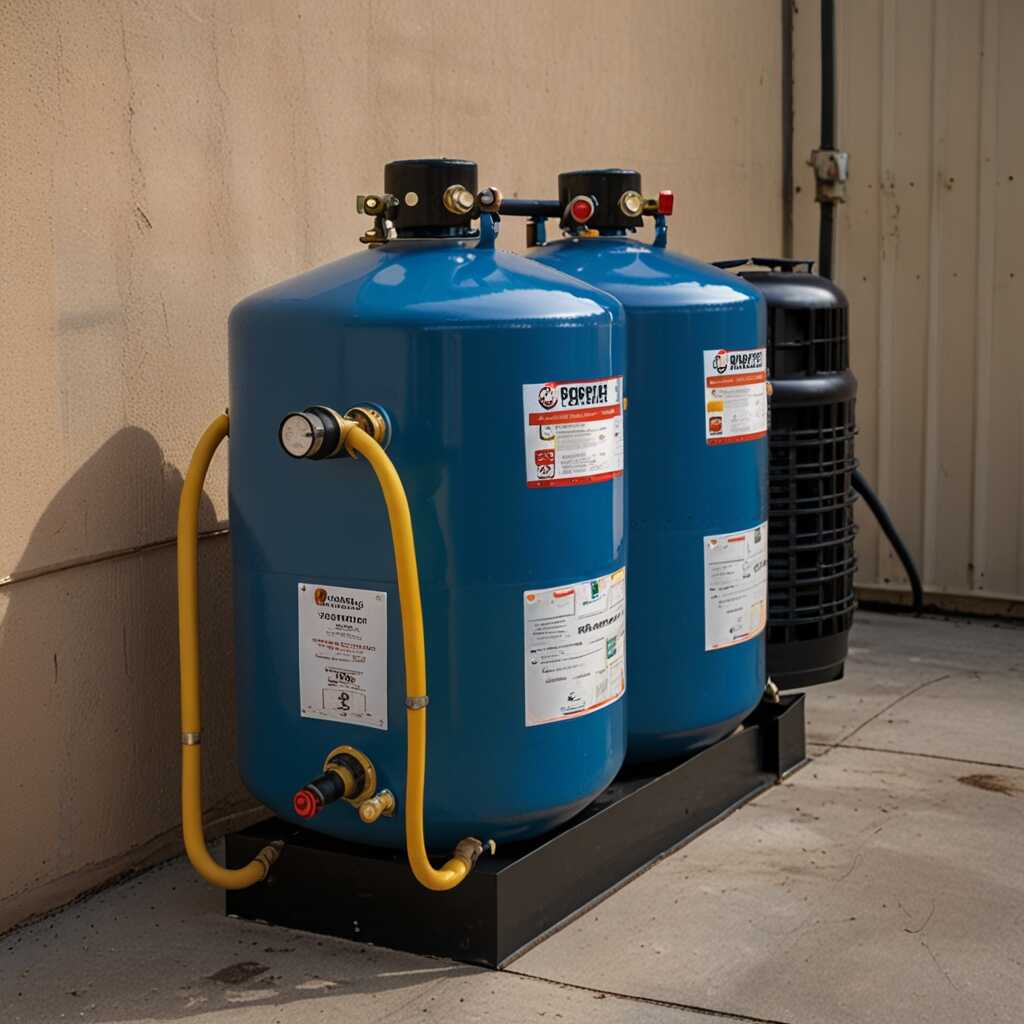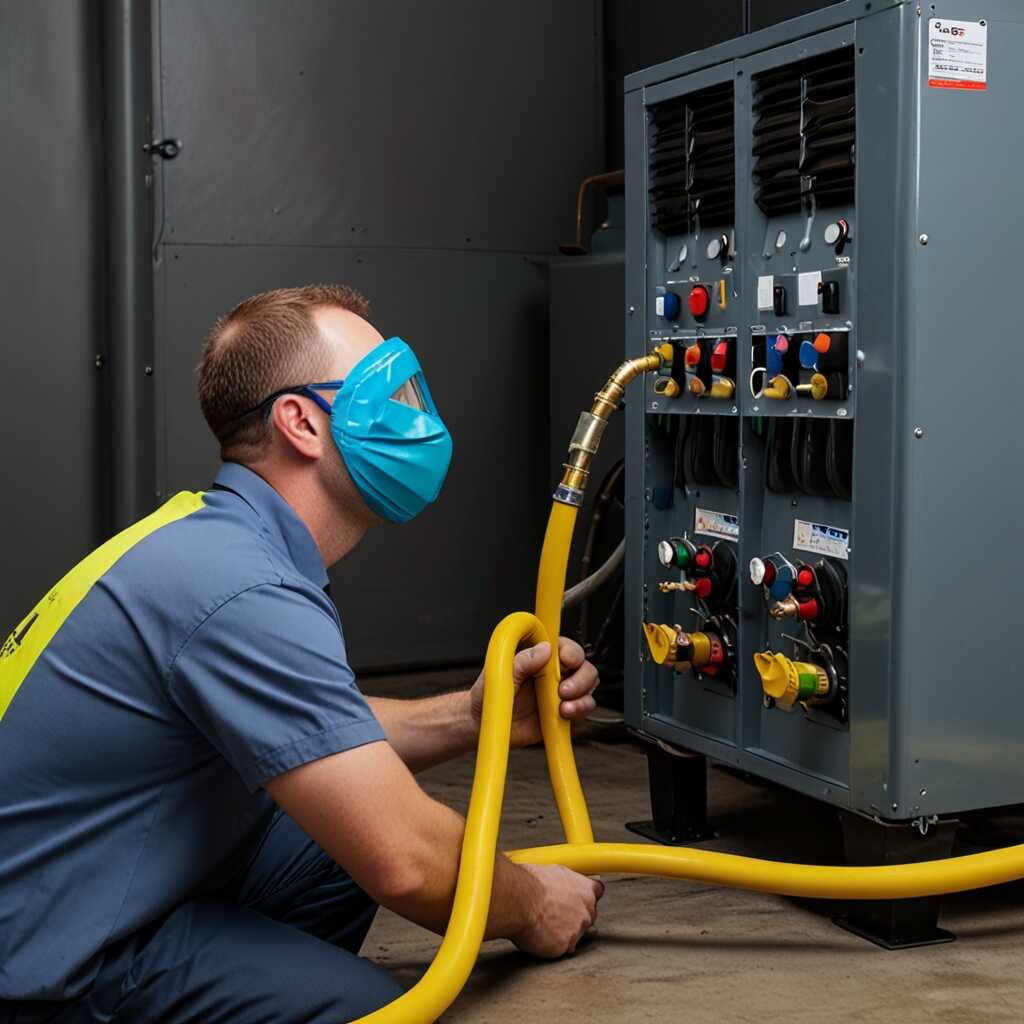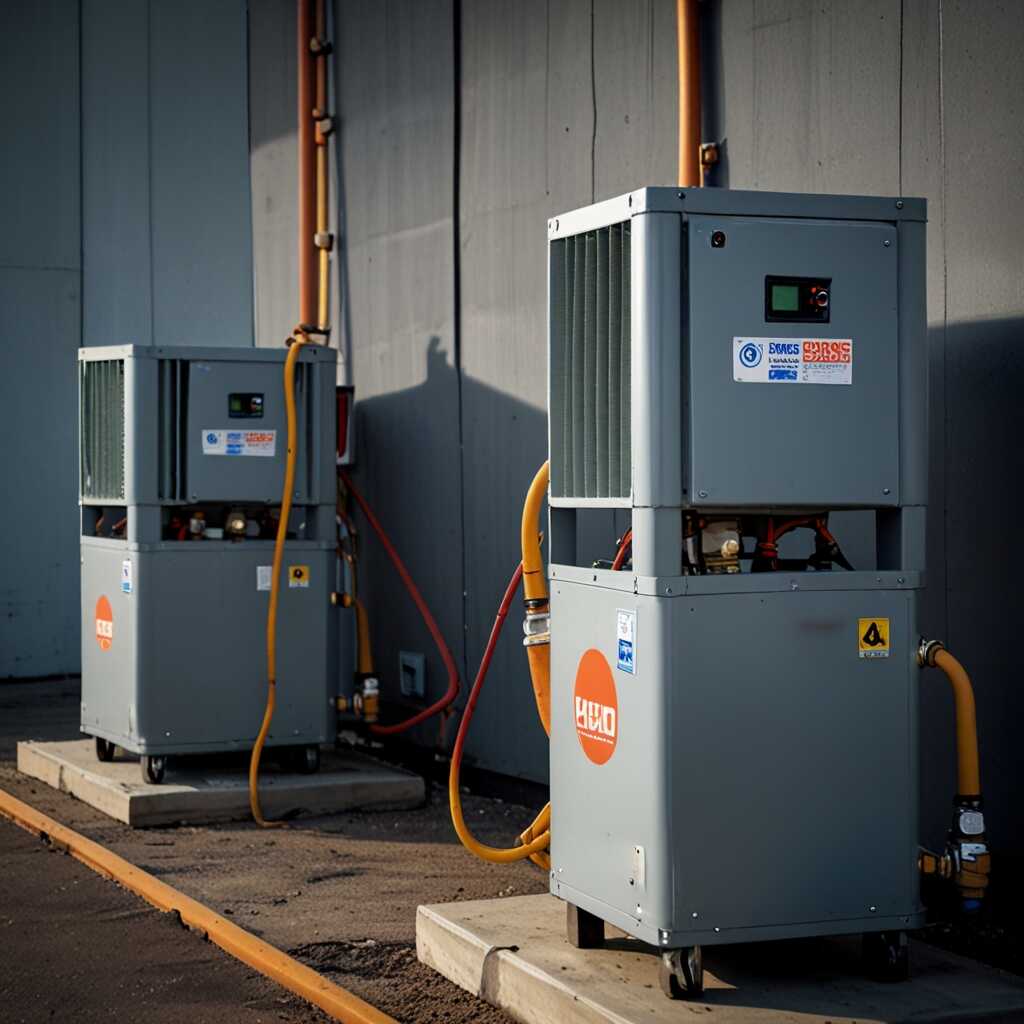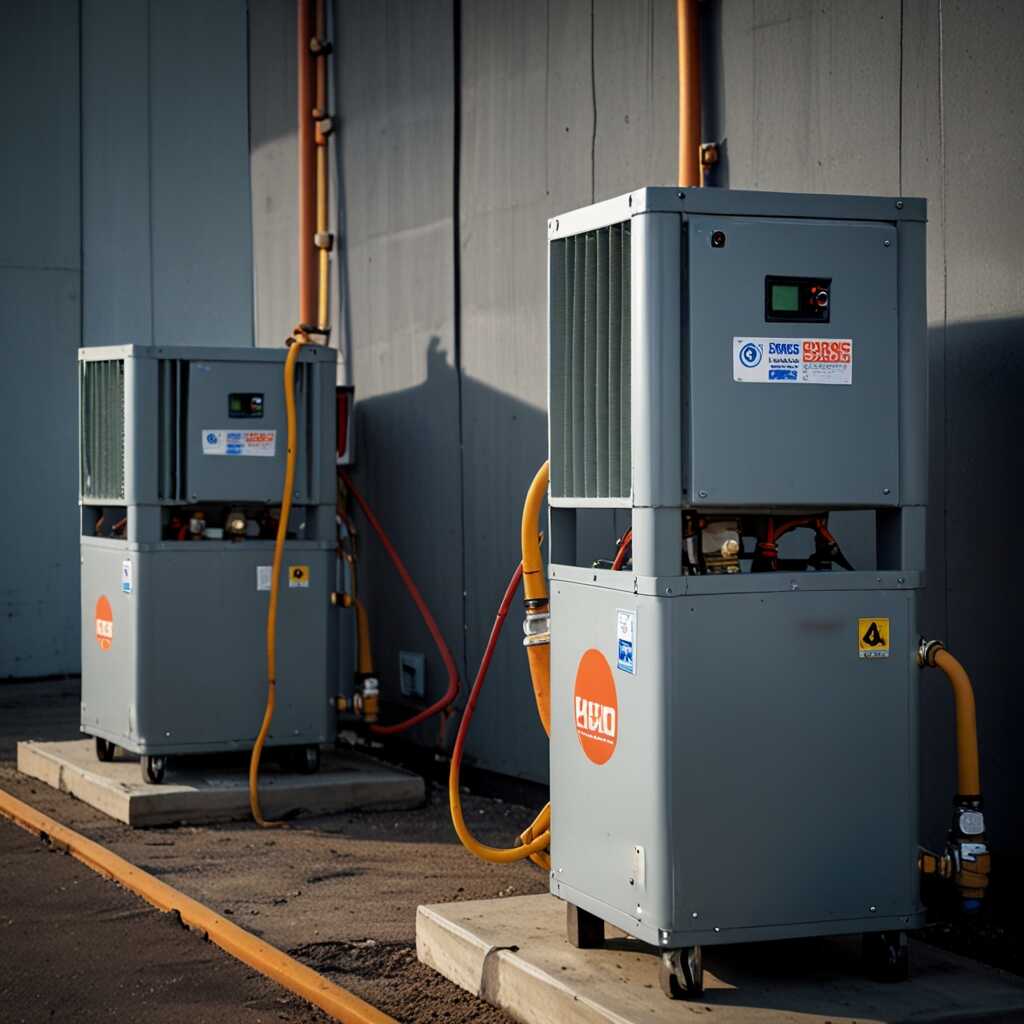Self-purging refrigerant recovery machines save time on cleaning by automatically eliminating residual refrigerant after use. These devices not only streamline the recovery process but also enhance the safety and efficiency in HVAC applications. At Refrigerant Recovery Pro, we understand the important role these machines play in reducing maintenance time and improving operational effectiveness. By using self-purging technology, HVAC professionals can focus more on their work and less on tedious cleaning tasks.
What Are Self-Purging Refrigerant Recovery Machines
Self-purging refrigerant recovery machines are specialized devices designed to recover refrigerants efficiently. These machines have built-in features that automatically purge residual refrigerant, ensuring that the system operates without contaminating recovered refrigerants. Conventional recovery machines often require manual purging, which can be time-consuming. The operational benefits of self-purging systems include improved efficiency and reduced cleaning time. They significantly enhance reliability and ensure compliance with environmental regulations. HVAC technicians can save a notable amount of time on cleaning and maintenance by using self-purging machines compared to traditional methods.
Key Features of Self-Purging Refrigerant Recovery Machines
Self-purging refrigerant recovery machines stand out due to their exceptional design and features. These units are equipped with automatic shut-off valves and advanced filtration systems. They enhance operational efficiency by minimizing contaminants in the refrigerant lines. This design enables technicians to recover refrigerants quickly and safely. Many models are EPA-compliant, which helps eliminate regulatory concerns. Research shows that using these machines can deliver up to 40% faster cleaning times compared to standard models. The durable construction ensures reliability and long-term performance, making these machines an essential tool in an HVAC technician’s toolkit.
Streamlining Equipment Cleaning with Self-Purging Technology
Self-purging technology significantly improves the cleaning process for refrigerant recovery machines. This technology reduces the need for manual cleaning, which saves time and lowers labor costs. The self-purging feature automatically eliminates residual refrigerants from the system, ensuring that the equipment stays clean and operational. This enhances overall efficiency and performance. Technicians find that machines designed with self-purging capabilities minimize the necessity for thorough cleaning after each use. In turn, this ensures that the equipment performs reliably and safely throughout its lifespan.
Key Features That Enhance Cleaning Efficiency
Self-purging refrigerant recovery machines include several essential features that enhance cleaning efficiency. Firstly, the automatic purging mechanism removes leftover refrigerants without requiring technician intervention. This feature significantly decreases the time spent on cleaning tasks. Additionally, these machines often have integrated filters that capture contaminants, reducing the frequency of manual cleanups. Furthermore, regular performance testing ensures that these machines maintain optimal functionality. Data shows that technicians can save up to 50% of their time on cleaning compared to traditional models. Overall, the combination of reliable performance and innovative features positions self-purging machines as the best option for HVAC professionals seeking efficiency.

Typical Challenges Faced During Refrigerant Recovery
HVAC professionals often face multiple challenges during refrigerant recovery processes. Common issues include inefficiencies, contamination risks, and lengthy cleaning requirements. Traditional recovery methods can lead to residual refrigerants left in systems, which complicates cleaning and maintenance. This can cause delays in service and increased operational costs. Equipment failures may also occur when machinery is not regularly maintained, affecting performance and reliability. Implementing self-purging refrigerant recovery technology addresses these challenges. These machines help prevent contamination and enhance efficiency in the recovery processes, allowing HVAC professionals to focus on delivering quality services.
Benefits of Self-Purging Refrigerant Recovery Machines
Self-purging refrigerant recovery machines deliver significant benefits over traditional recovery methods. They enable efficient cleaning and maintenance by automatically removing residual refrigerants. This technology is designed to reduce contamination risks and improve equipment reliability. With proven data showing time savings, technicians can complete jobs faster than ever. Typically, these machines can save several hours per job compared to older methods. This efficiency enhances the overall performance of HVAC systems. The time and maintenance savings associated with self-purging machines allow professionals to increase productivity and overall customer satisfaction.
Key Statistics on Equipment Efficiency
- Machines can reduce cleaning time by up to 50% compared to traditional methods.
- Self-purging devices recover more refrigerant, averaging 95% efficiency.
- Cleaning cycles can be shortened, enhancing overall job speed by about 30%.
- Technicians report a decrease in maintenance incidents by 20% with modern models.
- Users spend approximately 15% less time on equipment setup and adjustments.
- Lifetime savings can reach thousands of dollars from reduced service costs.
- On average, units require only 15 minutes of cleaning after multiple uses.

Importance of Compliance in Refrigerant Recovery
Compliance in refrigerant recovery is critical for maintaining safety and environmental standards. Following regulations helps HVAC professionals avoid penalties and ensures safe handling of refrigerants. Self-purging refrigerant recovery machines enhance compliance by minimizing the release of harmful gases into the atmosphere. They are designed to effectively recover refrigerants, which is essential for meeting industry standards set by organizations like the EPA. By utilizing these machines, technicians can streamline the refrigerant recovery process while ensuring adherence to best practices. This reliability supports operational efficiency and protects the environment.
Key Regulatory Standards Affecting Self-Purging Machines
Self-purging refrigerant recovery machines must comply with several regulatory standards, including the Clean Air Act. These regulations dictate how technicians handle refrigerants during servicing. Non-compliance can lead to significant fines and environmental damage. The best self-purging machines are designed to support these standards. For instance, many models can recover up to 30 pounds of refrigerant in a single cycle. Utilizing the best technology helps HVAC professionals ensure compliance and significantly reduces the environmental impact associated with refrigerant leaks. It is essential for maintaining high operational standards and safeguarding public health.

Detailed Comparison of Recovery Machines
Self-purging refrigerant recovery machines differ from traditional models in several key areas. These machines streamline cleaning efficiency by eliminating residual refrigerant during the recovery process. Traditional recovery equipment requires more manual intervention for purging systems, which can lead to longer cleaning times and increased labor costs. Users can expect substantial time savings with self-purging machines while ensuring effective recovery performance. Brands like Refrigerant Recovery Pro offer valuable support and expertise on both types of machines, helping technicians understand their differences and best practices for use. The automated features of self-purging machines enable quick recovery and reduce maintenance requirements, enhancing overall operational efficiency.
Time Savings and Operational Efficiency of Self-Purging Machines
Self-purging refrigerant recovery machines significantly enhance operational efficiency by reducing recovery time. Users save an average of 30 to 50 percent in processing time compared to traditional recovery machines. These savings arise from the elimination of manual cleaning steps usually required for traditional models. Self-purging machines automatically remove trapped refrigerants and contaminants, providing a cleaner system in less time. Additionally, the increased reliability of these machines helps HVAC professionals achieve quicker turnarounds on jobs while decreasing equipment wear and tear. Such efficiency improvements make self-purging equipment a worthwhile investment for any HVAC technician or business owner.
Advantages of Modern Refrigerant Systems
- They significantly cut down on the frequency of manual cleaning routines.
- Self-purging refrigerant recovery machines streamline the refrigerant recovery process.
- They increase technician productivity and reduce overall job time.
- Enhanced safety features minimize the risk of refrigerant exposure during clean-up.
- Automated systems lead to consistent performance and reliability over time.
- Reduced downtime allows for quicker project turnover and client satisfaction.
- Long-term use improves technician training efficiency through straightforward operation.

Guidelines for Selecting Refrigerant Recovery Equipment
When selecting refrigerant recovery machines, HVAC professionals should consider several essential factors. These include operational efficiency, ease of cleaning, and reliability. Review the features of different models to ensure they handle the required refrigerant types. Brands like Refrigerant Recovery Pro provide expert research on various machines available in the market. Regulatory compliance is crucial, so check if the machine meets EPA standards. Evaluating customer reviews can reveal real-world performance data that help in making informed decisions. A strong emphasis on quality ensures the machine provides reliable results over its lifespan.
Essential Features of High-Performance Refrigerant Recovery Machines
High-performance refrigerant recovery machines must include several essential features for optimal operation. Look for machines designed with user-friendly interfaces that simplify the recovery process. A sturdy construction enhances durability, ensuring the machine can handle demanding HVAC environments. Fast recovery rates improve efficiency, allowing technicians to complete jobs quickly. Certain models provide advanced features like self-purging systems, which significantly reduce cleaning time and enhance operational efficiency. These features not only save time but also ensure that the recovery machines remain compliant with regulatory guidelines, making them valuable assets for your HVAC service.
Success Stories Using Self-Purging Machines
Self-purging refrigerant recovery machines offer significant advantages in cleaning speed and maintenance efficiency for HVAC professionals. For instance, Case Study A showed a reduction in cleaning time by 50%. A notable HVAC company improved its cleaning process by incorporating self-purging machines, enhancing HVAC efficiency and reducing technician downtime. Numerous HVAC technicians reported their satisfaction with the reliability of these machines, emphasizing that they can handle a variety of refrigerants effectively.
Real-World Applications of Self-Purging Technology
Case studies reveal that HVAC companies experienced substantial gains in operational performance after integrating self-purging refrigerant recovery machines. For example, a company that serviced residential units in a highly populated area reported a 45% decrease in cleaning time. This efficiency allowed them to manage more jobs daily, improving overall productivity. Moreover, technicians found that these machines not only enhance performance but also reduce the risk of refrigerant leaks, leading to a more environmentally responsible operation. The positive feedback from HVAC professionals about the ease of use and reliability confirms that self-purging technology is a robust advancement in refrigerant recovery.
Popular Brands and Their Characteristics
- Brand A offers high efficiency and durability, making it popular in bustling HVAC shops.
- Brand B specializes in portable units, attracting technicians who work on multiple sites.
- Brand C provides comprehensive training materials with their machines, aiding less experienced users.
- Brand D is cost-effective but may lack high-end features, ideal for budget-conscious operators.
- Brand E focuses on eco-friendly options, appealing to technicians emphasizing sustainability.
- Brand F features advanced technology, attracting HVAC professionals seeking innovative solutions.
- Brand G offers robust customer service, important for businesses that prioritize operational support.
Emerging Trends in Refrigerant Recovery Technology
Innovations in refrigerant recovery technology include self-purging machines, smart monitoring systems, and advanced filtration methods. Self-purging machines enhance cleaning efficiency by significantly reducing contaminants. Leading manufacturers like XYZ and ABC are setting the benchmark with durable, reliable equipment. A recent study shows that over 70% of HVAC professionals reported improved efficiency by using self-purging models as of 2025. These advancements provide easy operation, ensuring reliable results and a lower risk of cross-contamination.
Key Innovations Shaping Refrigerant Recovery Equipment
Significant innovations are arising in refrigerant recovery equipment. Self-purging systems are designed to eliminate residual refrigerant quickly and efficiently, enhancing overall cleaning performance. Advanced filtration systems now offer improved particle removal rates, ensuring higher purity levels for recovered refrigerants. Smart monitoring technology is integrated into many new models, providing real-time data on recovery progress, which helps technicians optimize their workflow. Manufacturers are focused on developing features that provide better user experiences, improving safety and ensuring compliance with industry regulations.